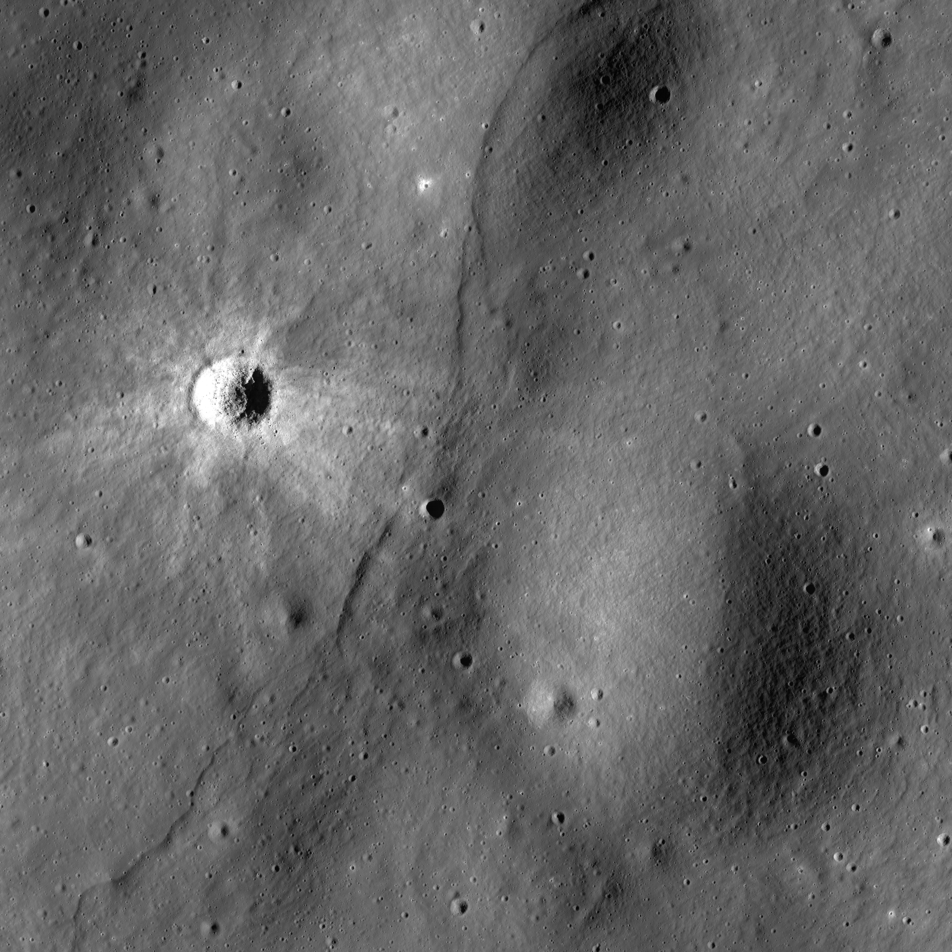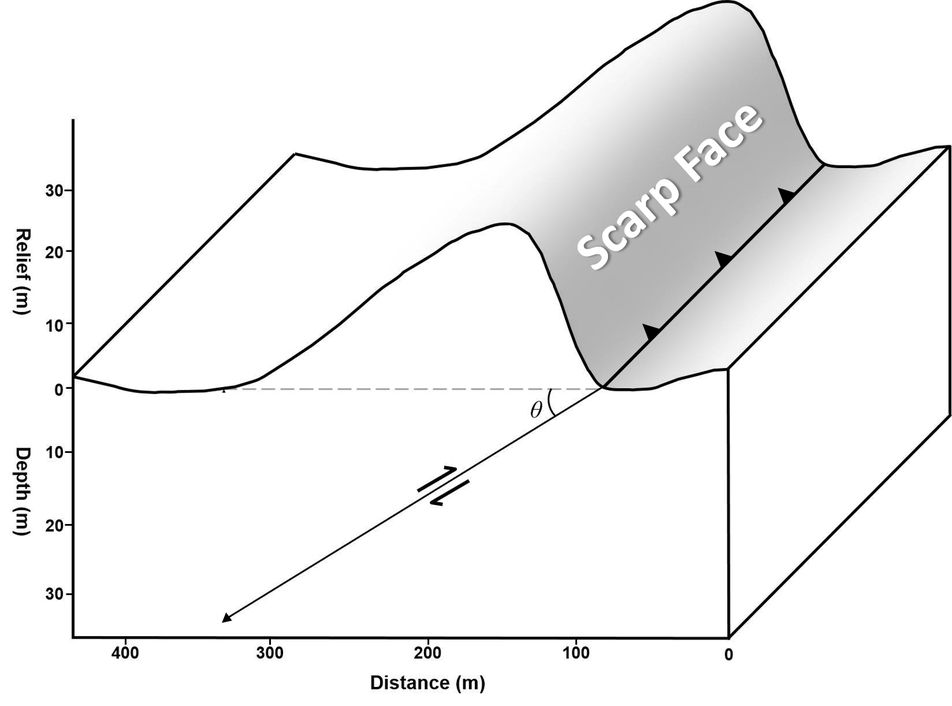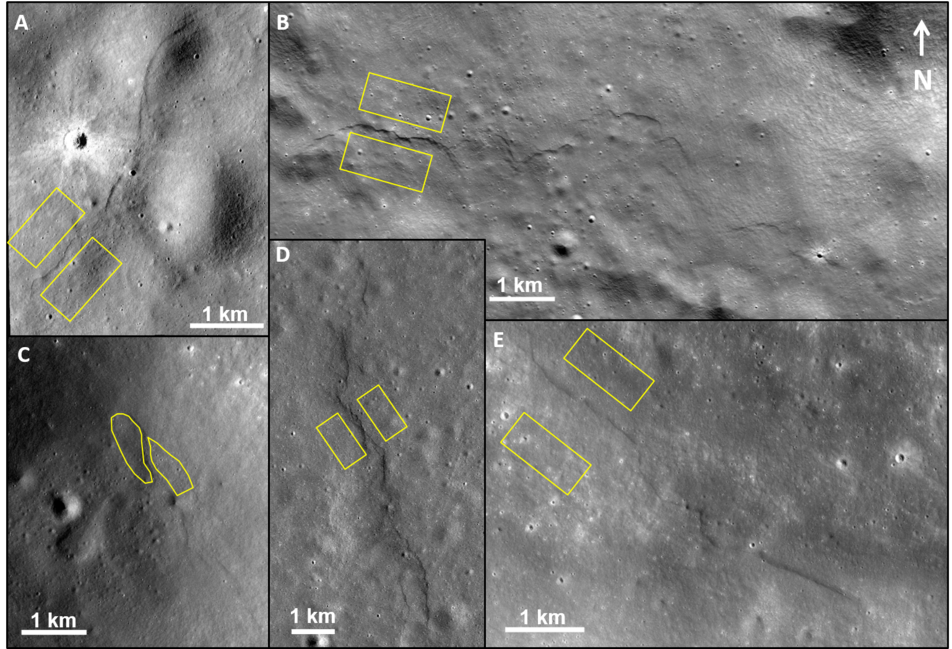
The Moon does not exhibit evidence of plate tectonics, which is the main driver of faulting on the Earth. Instead, long-term interior cooling causes contraction and buckling of the lunar crust, resulting in compressional landforms called lobate scarps. By analogy with similar landforms on the Earth, lobate scarps are thought to be the surface expression of low angle thrust faults. In cross-section, these scarps are seen as asymmetric ridges with steeply dipping scarp faces. Lengths can vary from few tens of meters to several kilometers and in map view, scarps can be arcuate to linear in shape.

Early studies of lobate scarps were conducted using Apollo Panoramic Camera images and, because of the orbits of the Apollo spacecraft, were confined to the equatorial region. Since the start of the LRO mission, thousands of lobate scarps have been identified across the lunar surface with high-resolution LROC images. These new images enable quantitative structural measurements and morphometric analyses to determine the amount of crustal shortening accommodated by the faults, the depth and dip angle of faulting, and to estimate the amount of compressional stresses that were needed to initiate thrust faulting.
A new study from the LROC science team revealed that these faults typically only offset the upper kilometer of the lunar surface. Depending on what we assume for the strength of the upper crust, horizontal compressive stresses in the lunar crust may have exceeded 400 MPa or may have been as low as ~18 MPa. (For reference, the pressure at the deepest point of the Earth’s oceans is ~100 MPa.) The average amount of horizontal shortening across the individual lobate scarps associated with this compression is over 100 m. By summing up shortening across all the lobate scarps, scientists can estimate the total amount the Moon shrank due to internal cooling; or rather make an estimate for the period over the last few hundred million years (older scarps are now gone due to impact cratering).

Another crucial question we want to answer is the timing of scarp formation, i.e., how ancient or recent are these tectonic features? Initial morphological evaluations revealed that these scarps are relatively young because of their small sizes, crisp appearances, and cross-cutting relationships with small craters. Scientists can also estimate an absolute age for the lobate scarps by determining densities of impact craters that have formed on top of the scarps. For a representative scarp surface, craters and their diameters are measured directly from LROC images. Depending on the frequency of craters of a given diameter, we can derive an absolute model age for that surface by relating the crater density to models of how frequently craters form on the Moon. Absolute model ages from these measurements indicated that slip may have occurred on the thrust faults within the last 150 million years – recently, by geologic standards! These faults could be still active today!
The overall goal of this study was to evaluate what the Moon was like shortly after it formed when a giant impactor struck Earth. The just-formed Moon was very hot, and there has been a debate over whether the Moon was initially totally molten, or just the upper third to half formed a magma ocean. These two scenarios predict different cooling, and thus different contraction histories for the Moon – the former predicts that faulting should increase with time, and thus young lobate scarps should exist, the latter predicts that faulting would not be global, and would have ceased early in the Moon's history (around three billion years ago). Thus this new work and the finding of young ages for lobate scarps supports the idea that the Moon was once completely molten!
The full story on lunar lobate scarps can be found in the most recent Lunar Reconnaissance Orbiter special issue of Icarus:
Clark J. D., J. M. Hurtado Jr., H. Hiesinger, C. H. van der Bogert, H. Bernhardt (2017) Investigation of newly discovered lobate scarps: Implications for the tectonic and thermal evolution of the Moon, Icarus 298, 78–88, doi:10.1016/j.icarus.2017.08.017.
Enjoy the full-resolution view of Joy scarp below!
Published by Brett Denevi on 5 October 2017